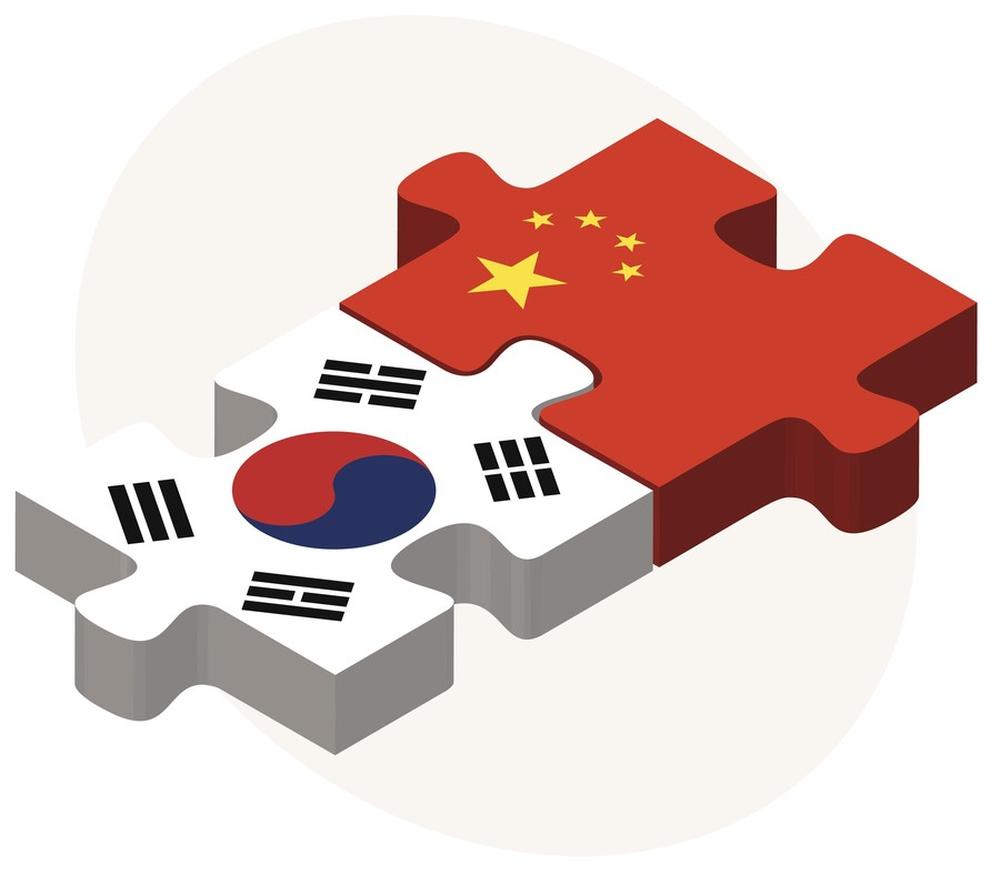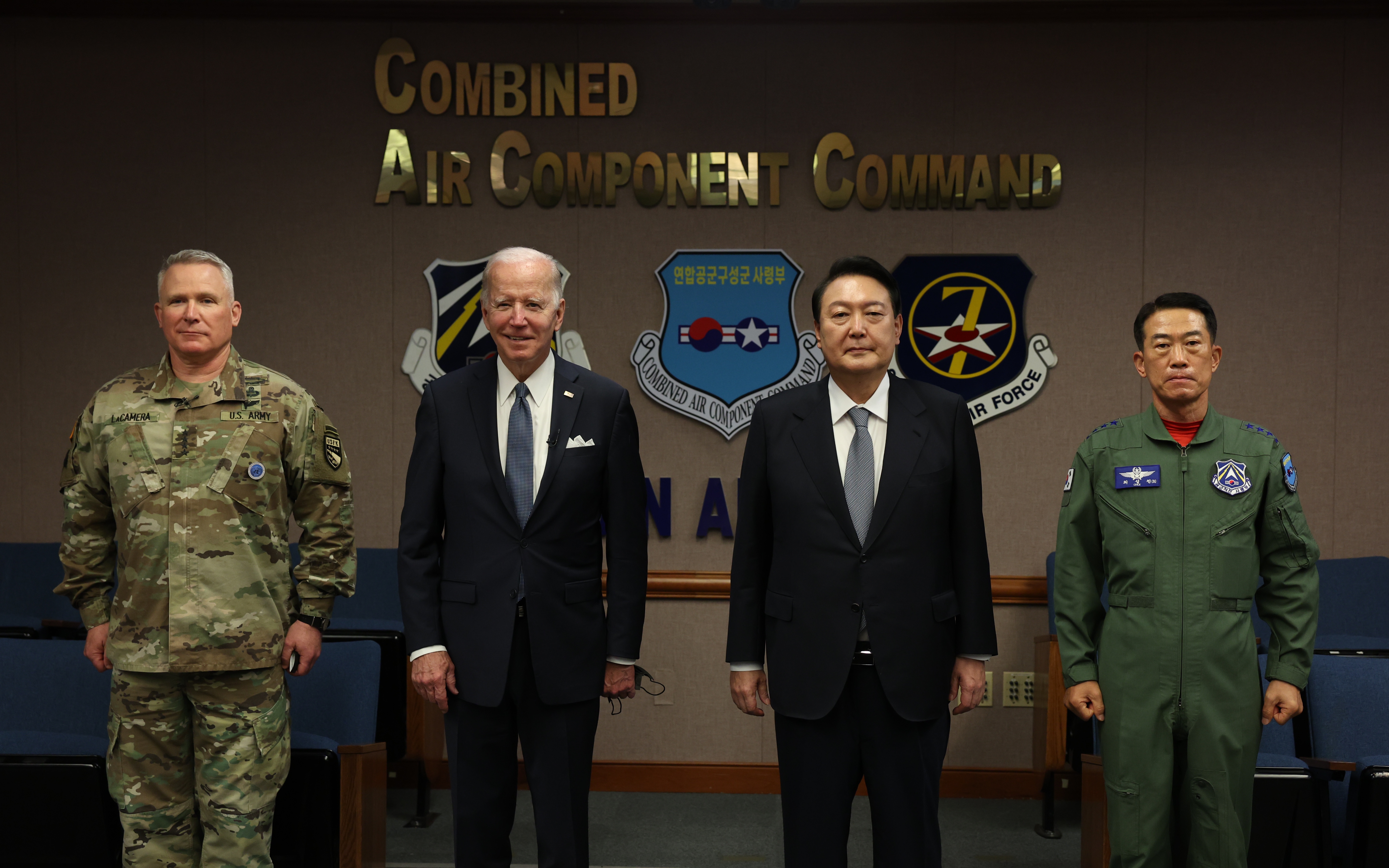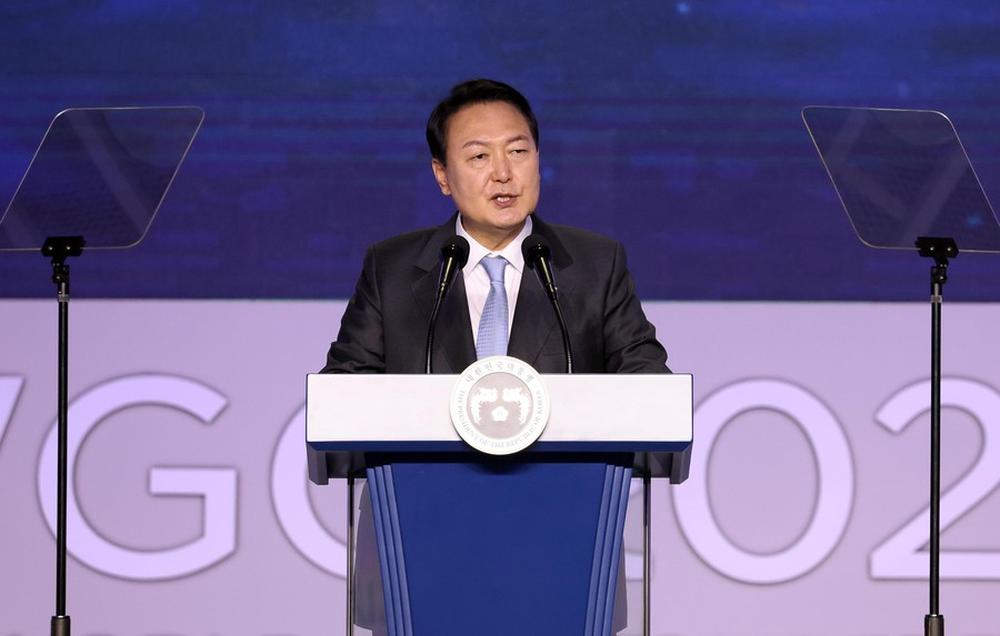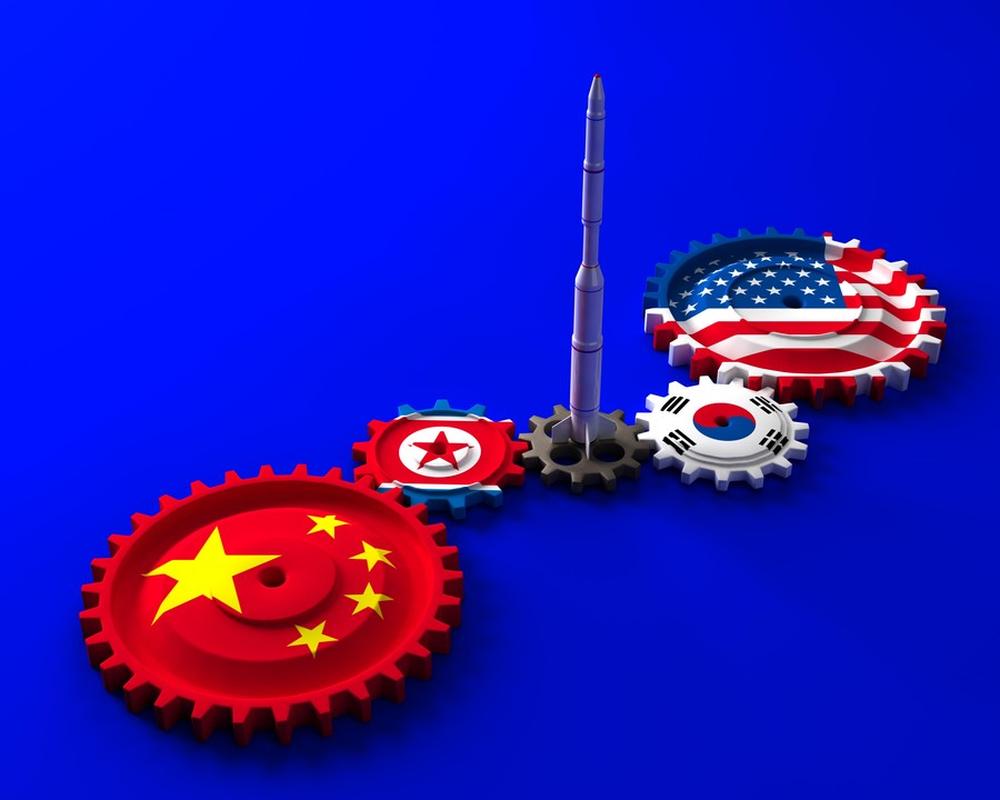- #China
- #South Korea
- #US Foreign Policy
- #US-ROK Alliance
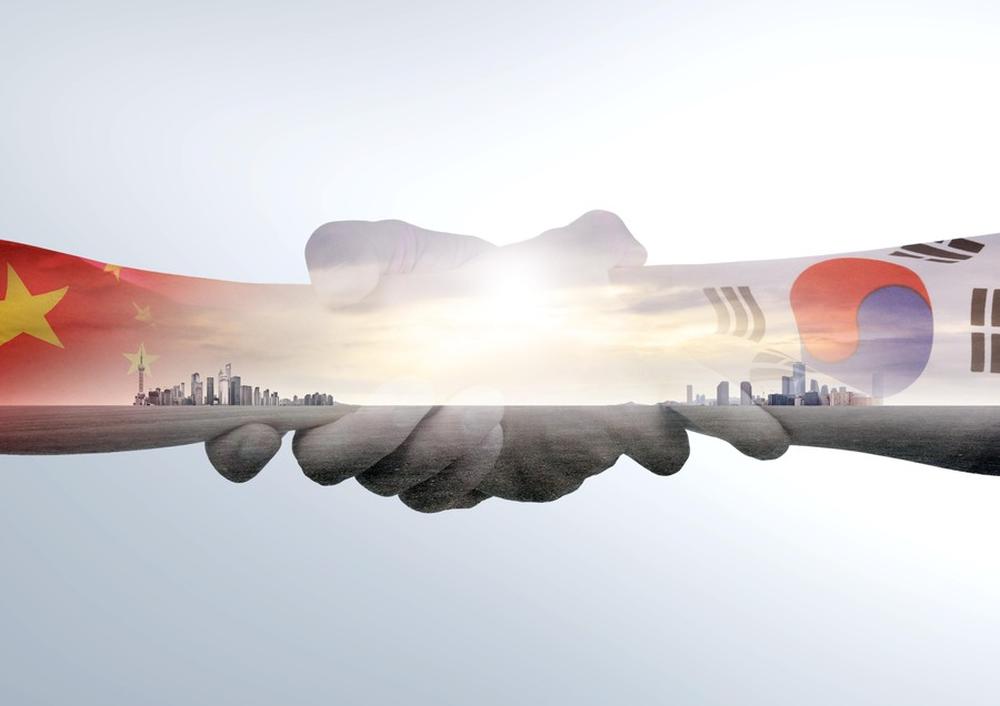
► The Yoon Suk Yeol administration will probably be more aggressive and assertive in its foreign policy and security measures and more active in dealing with its relations with China and the United States.
► China should pay more attention to South Korea, study and analyze the Yoon Suk Yeol administration, and make new policies on ROK.
With President Yoon Suk Yeol taking office on May 10, the Republic of Korea’s new cabinet also came into being. Judging from the current appointments, several new cabinet members once served during the Lee Myung-bak and Park Geun-hye presidencies. These old faces in the new government are known for their political conservatism and are likely to continue the one-sided pro-American stance. Thus, the Yoon Suk Yeol administration will probably be more aggressive and assertive in its foreign policy and security measures and more active in dealing with its relations with China and the United States. China should pay more attention to South Korea, study and analyze the Yoon Suk Yeol administration, and make new policies on ROK.
I. The Yoon Suk Yeol administration’s perception and prediction of the strategic situation in East Asia
The newly formed South Korean government holds that the long-term China-U.S. competition will deteriorate its surrounding strategic situation. In its Interim National Security Strategic Guidance and National Defense Strategy, the Biden administration alleges that China is America’s “most consequential strategic competitor”. Even in the context of the lingering Russia-Ukraine conflict, the United States, instead of making active and direct intervention in solving the conflict, still holds China as the top priority in its foreign strategy and prepares for its long-term competition with China in Indo-Pacific.
On the Korean Peninsula issue, due to the regime change in South Korea, the conservative forces represented by Yoon Suk Yeol have returned to power. Such regime change makes the United States hold new expectations for strengthening the U.S.-ROK alliance and collaborating with Japan to implement substantive military cooperation. In the context of the escalating nuclear threat from the DPRK, the intensified strategic competition between China and the United States, and the new Cold War between the major powers represented by the Ukraine conflict, the marginal benefits of South Korea’s “strategy of ambiguity” and “balanced policy” of “deepening economic ties with China and security cooperation with the United States” are shrinking. Thus, South Korea is at the crossroad of making tremendous changes; it will rebuild and strengthen the comprehensive strategic alliance between South Korea and the United States, develop South Korea-China relations based on mutual respect, restore and develop South Korea-Japan relations, and take a more assertive stance, based on the South Korea-US alliance, in dealing with North Korea’s nuclear and missile threats. Specific measures include deploying additional THAAD units, seeking to join QUAD, participating in the anti-China technology alliance led by the United States, and so on. These measures have become the realistic choices of Yoon Suk Yeol’s government.
The Yoon Suk Yeol government holds that South Korea’s national and military strength ranks among the top ten and seventh in the world respectively. South Korea is essentially a “strong middle country” with strong nationalist sentiments. The Yoon Suk Yeol government believes that South Korea should play a more important global role that matches its national and military strength. It is the strategic goal of the new government to make South Korea a world power. Therefore, South Korea will have a stronger will to embrace the world system dominated by the United States. The Yoon Suk Yeol government’s main diplomatic goals will be joining the G8, QUAD, FOIP, and other newly formed organizations with the U.S. at the core and playing a role comparable to that of Japan. However, in terms of relations with China, the Yoon Suk Yeol government holds that South Korea has been suppressed by China and fails to obtain the “respect” corresponding to its national strength and China’s diplomatic and economic “coercion” toward South Korea shall be changed.
Besides, the Yoon Suk Yeol government also holds that Yoon Suk Yeol’s victory “greatly relieves” the United States. According to a recent report by the U.S. Congressional Research Service (CSR), Yoon’s win “likely signals greater alignment with the United States on a number of issues followed by many Members of Congress, including policy toward North Korea, China, Japan, the Indo-Pacific.”
As for ROK’s policy on North Korea, the CSR report writes “Yoon criticized the Moon government for being insufficiently committed to North Korea’s denuclearization and reacting in a ‘subservient’ manner to Pyongyang’s bellicose actions”. Besides, Yoon said, “he would expand the ROK’s defense and deterrence capabilities in conjunction with the U.S. alliance, including offensive strike capabilities and enhanced missile defense”. Yoon Suk Yeol argues he will only pursue a peace treaty “when and if North Korea makes active efforts in complete and verifiable denuclearization” and dismisses President Moon Jae-in’s efforts to “preemptively offer a U.S.-ROK peace declaration to North Korea”. Due to his assertive stance on the Peninsula issue, Yoon Suk Yeol is popular in the United States. The United States will deepen its security cooperation with South Korea in deploying additional THAAD units and other strategic assets, enhancing South Korea’s missile defense system, etc. In response to the DPRK nuclear issue, the Yoon Suk Yeol government may adopt the policy of “developing a nuclear arsenal to counterbalance the DPRK nuclear strength”. To deter the escalating nuclear threats from DPRK, South Korea will probably develop its nuclear weapons or deploy U.S. tactical nuclear weapons, share America’s nuclear strength and extend the U.S. nuclear deterrence. The Yoon Suk Yeol government will further enhance the construction of the 3K system featuring the South Korean anti-missile system, kill chain, and large-scale retaliation system to deal with the North Korean threats.
In terms of its China policy, the Yoon Suk Yeol government claims the United States believes that they shared diverging ideas in dealing with North Korea and China, and such divergence cast a shadow on the Korea-US alliance. Therefore, the United States holds higher expectations for the Yoon Suk Yeol government and wants to deepen bilateral cooperation, including allowing the U.S. to deploy additional THAAD units, formally joining QUAD+, co-developing QUAD vaccines, and participating in the anti-China emerging technology alliance, etc.
In addition, the Yoon Suk Yeol government believes that China also attaches great importance to the China-ROK relationship and wants to avoid setbacks in bilateral relations. The Yoon government holds “China’s top leaders, high-level figures, scholars, and official media are all mobilized in the political and psychological war against South Korea”; meanwhile, though China holds expectations for the Yoon government, it also raises its warnings. Before and after the South Korean Election, the Chinese Ambassador to South Korea Xing Haiming met with and conveyed the congratulations of Chinese leaders to Yoon Suk Yeol, Chinese embassy staff also met with their counterparts and heads of South Korea’s unified foreign affairs. However, the Yoon government is not optimistic about its diplomatic and security relations with China, holding that “once South Korea considers the additional deployment of THAAD units, seeks formal membership in QUAD, joins the U.S.-Japan missile defense system, strengthens the US-Japan-South Korea security cooperation, and participates in the core supply chain alliances, China will use high-intensity ‘three wars’ (public opinion warfare, legal warfare, psychological warfare) and military coercion to pressure South Korea. Meanwhile, some gray zone tactics could also be used, including economic retaliation, interruption of resource exports, violation of South Korea’s air defense identification zone and the Yellow Sea Middle Line, and even provocative acts such as air force live-fire training in the air defense identification zone.”
II. The policy direction of the Yoon Suk Yeol government
The Yoon Suk Yeol government believes that it should review the long-standing policy of “deepening economic ties with China and security cooperation with the United States”, get rid of the “separation between security and economy” which caused policy confusion, and turn to the “U.S.-ROK alliance based” foreign policy. There are three reasons behind the Yoon government’s policy shift: (1) With the deepening economic dependence on China, South Korea is likely to be influenced and restricted by China in developing its security policies; (2) South Korea’s accommodating attitude toward China makes the United States worry that the U.S.-South Korea alliance could be undermined (3) It is difficult to maintain good relations with China and the United States at the same time and even undermines the relationship with both.
Yoon Suk Yeol’s government believes that strengthening allies with the United States may deteriorate China-ROK relations and even cause retaliation from China, but it is still worthwhile in terms of more benefits over the loss. If China could influence South Korea and weaken the South Korea-US alliance, in the long run, South Korea might be excluded from the US alliance system, and China’s influence on the Korean peninsula might increase which will damage South Korea’s autonomy. However, if South Korea obeys China’s “unjustified demands” out of the fear of “economic losses” and remains silent about China’s interference in South Korea’s internal affairs, the “strategic losses” will be even greater.
Given this, the Yoon Suk Yeol government suggests that “South Korea’s China policy should base on the South Korea-US alliance” and it consists of the following two overall strategies and five specific measures.
The overall strategy can be divided into two parts:
First, the keynote of ROK’s China strategy has changed from “cooperation” to “cooperation and containment”. The Yoon Suk Yeol government believes that China has obviously “contained” South Korea’s security policy, and South Korea’s unilateral pursuit of “cooperation” will inevitably lead to an overly accommodating diplomacy and loss of diplomatic dominance with China. Therefore, South Korea can cooperate with China on the issues of common interests, but on military security issues such as the Air Defense Identification Zone, the North Korean nuclear issue, and the security and stability of the Korean Peninsula and the region, South Korea should assert its interests and hold to contain China to gain its respect.
Second, in terms of strategy towards China, South Korea should use both tactical cooperation and strategic containment. The sharp policy that turns to contain China will cause fierce resistance from China, which is not desirable. The containment of China should be done in an indirect and roundabout way. On basic-level issues such as politics, diplomacy, economy, and society, South Korea can continue and strengthen cooperation with China. But in the long run, South Korea needs to strengthen the South Korea-U.S. alliance step by step and increase its strategic containment of China.
In terms of specific strategic measures, the Yoon Suk Yeol government believes that it should explore strategic plans for China from multiple aspects. China’s strategy on the Korean peninsula targets not only South Korea, and its ultimate goal is to diminish the threats from the U.S. and Japan and reconstruct the regional order according to its own needs. As part of China’s East Asia strategy, the ultimate goal of China’s strategy on the Korean peninsula is to resolve the East China Sea, Taiwan, and South China Sea issues by disintegrating and alienating the bilateral and multilateral cooperation led by the United States, including the South Korea-U.S. relation, the South Korea-the United States-Japan cooperation, and the QUAD. Therefore, the Yoon Suk Yeol government’s China strategy should not only base on the South Korea-U.S. alliance but also on rebuilding and strengthening cooperation with other countries in the region.
The specific strategic measures consist of five aspects:
The first measure is to increase dialogue and cooperation in the field of military security, promote mutual understanding, and prevent accidental conflicts. For example: (1) Initiate national defense strategic dialogue and high-level military exchanges, and activate bilateral dialogue; (2) Build a mechanism similar to the “sea and air liaison mechanism” between China and Japan, and formulate countermeasures to prevent accidental conflicts; (3) Implement bilateral and multilateral joint military exercises (joint maritime search and rescue exercises, submarine structure training, anti-terrorism training, etc.); (4) East Asian arms control consultations; (5) Promote high-level security policy exchange projects.
The second measure is to weaken the dependence on China in solving the North Korean nuclear issue and strengthen the response capability centered on the Korea-US alliance. The role of China in guiding North Korea’s denuclearization has exposed many limitations. South Korea should no longer focus on North Korea’s denuclearization but give priority to how to deal with the North Korean nuclear threat. At the same time, South Korea should also make China aware that the high level of North Korea’s nuclear capabilities and actual combat deployment is a life-and-death threat to South Korea’s security. From the perspective of the right of self-defense, South Korea must strengthen its offensive and defensive capabilities. This is to minimize China’s backlash against the strengthening of the South Korea-U.S. alliance. Given China recognizes the threat of North Korea, South Korea could take measures such as strengthening the missile defense system, promoting the security cooperation between the United States, Japan, and South Korea, deploying U.S. strategic assets, and reconfiguring tactical nuclear weapons, to prompt China to pressure North Korea toward denuclearization. Therefore, South Korea and the U.S. should jointly formulate and publish a “Roadmap to Address the North Korean Nuclear Threat” based on the different levels of the North Korean nuclear threat. This will influence and facilitate China to act more on solving the North Korean nuclear issue.
The third measure is to comprehensively respond to China’s military activities around the Korean Peninsula. The strengthening of the South Korea-US alliance may provoke a military response from China, such as military pressure. For example, Chinese military aircraft enter South Korea’s “air defense identification zone”, and PLA ships cross the middle line of the sea. In addition to acting alone, South Korea should also join forces with the U.S. Navy, Air Force, and even the Japanese Maritime and Air Self-Defense Forces to make it clear to China that such actions will in turn deepen the South Korea-U.S. alliance and strengthen the U.S.-Japan-South Korea military cooperation.
The fourth measure is to strengthen military capabilities and response posture and deal with potential threats from China. The strengthening of the South Korea-US alliance is expected to provoke Chinese military actions and “provocations” in the Yellow Sea. In this regard, the Yoon Suk Yeol government should take the following actions: (1) The South Korean army should establish a military force that can win or achieve anti-access or area-denial in local military conflicts; (2) Amend the “Korea-U.S. Alliance Treaty” to provide the legal basis for the U.S. and allow the United States to intervene in potential China-South Korea maritime conflicts.
The fifth measure is to increase the roundabout encirclement of China, promote the construction of overseas military bases, and increase the sharing of overseas bases with the U.S. armed forces. China’s Belt and Road strategy has also established overseas land and sea bases, or many infrastructures similar to military bases, expanding geopolitical and geoeconomic influence. Taking this into account, South Korea should also establish or acquire overseas military bases, which can not only enhance South Korea’s diplomatic and military presence but also threaten China’s maritime security. South Korea could also make or use some mild maritime military conflicts to disturb China’s military operations around the Korean Peninsula and help the U.S. form the strategic encirclement of China in East Asia and even in the global grand chessboard. In terms of construction methods, the ROK armed forces should promote the construction of military bases in Southeast Asia, the Middle East, and Africa in a cycle of 20-30 years. Before that, South Korea could turn to the United States for sharing overseas military bases to gain experience in operating overseas bases on a 10-year cycle.
The Yoon Suk Yeol government believes that the transformation of foreign policy based on the Korea-U.S. alliance will not be easy. China is also ready to show its strength, and South Korea should pay attention to restraining “unnecessary” stimulus to China in its diplomatic actions. Therefore, the Yoon Suk Yeol government’s approach to strengthening the Korea-U.S. alliance will adhere to three principles, namely (1) step-by-step and phase-by-stage; (2) seize the right time; (3) build alliance and participate together, and cooperate with friendly countries. In particular, the progress and threat level of the North Korean nuclear issue should be utilized, and the above actions should base on the progress and threat level of the North Korean nuclear issue.
III. China’s policy choices
To sum up, in the context of the lingering global COVID pandemic and the strategic competition between China and the United States, South Korea’s internal social thoughts and public psychology have undergone a clear right-leaning conservative turn. Under this circumstance, Yoon Suk Yeol comes to power, and his government members are extremely conservative. In the short run, the new government’s diplomatic and security policies will be “one-sided pro-America”, tough, conservative, and aggressive. Such policies will deconstruct the security and political balance on the Korean peninsula and conflict with the security architecture of the Korean peninsula and Northeast Asia.
In the joint statement of the South Korea-U.S. summit, South Korea did almost everything China feared. Of course, the reason is that the Yoon Suk Yeol government has abandoned the previous strategy of balancing short-term and long-term interests in dealing with the China-ROK issues, and stopped wavering between short-term economic interests and long-term strategic interests. This is the main aspect of South Korea’s strategic choice which is induced by the United States but made by South Korea.
Therefore, for China, the relationship between China and South Korea calls for clearer strategic guidance. It should no longer be superstitious that China and South Korea can be restored through the inducement of economic interests, and there is no need to worry that strong diplomatic behavior can alienate South Korea further. Clear and powerful actions are more persuasive. Not to mention hoping that China’s policy ambiguity will restore South Korea’s previous strategic ambiguity between China and the U.S., as South Korea no longer believes it can benefit from that strategic ambiguity. As Yoon Suk Yeol said, all South Korean wants from China is the trade and economic exchanges.
In general, for the new China-ROK relations, China needs to make the following preparations and measures for macro and micro issues. That is, the solution to strategic issues depends on the China-U.S. relations, while the solution to tactical issues depends on the cooperation between China and North Korea.
The first measure is to attach more importance to South Korea in a diplomatic aspect. In any case, as one of China’s important neighbors, South Korea deserves China to make a clear diplomatic strategy in dealing with bilateral relations, and the China-ROK relationship should not be regarded as a subordinate issue to China-U.S. relations. In particular, bilateral interactions between China and South Korea shall not be “cleared” due to the dynamic situation of the pandemic. Similarly, China needs to improve China’s foreign affairs, global promotion, and diplomacy, as well as bilateral friendship and project better images in South Korea.
Second, the economic ties between China and South Korea are the only tight bonds in bilateral relations. China needs to find mutual anchors and common interests with South Korea, especially in the value chain. In terms of technology, South Korea still relies on the Chinese market which enables China to expand and bind its ties with South Korea. From the global perspective, China needs to find how to reverse South Korea’s follow of the United States in containing China in the economy, technology, and trade and make targeted measures to prevent South Korea from participating in various small blocs formed by the United States.
Third, in terms of security, South Korea wants to pull the United States into the conflicts in the Yellow Sea and the East China Sea to benefit from these conflicts or frictions. Such behaviors must be contained. For example, China can make targeted preparations on issues such as the Yellow Sea middle line and the air defense identification zone and demonstrates its military strength, and conduct military cooperation with North Korea and Russia in the region.
Fourth, make full use of China’s favorable diplomatic position on the Korean Peninsula issue, make an active and effective intervention and mediation on the DPRK nuclear issue, increase opposition to the introduction of US strategic assets by South Korea, and make targeted countermeasures. Similarly, China must strengthen and guide China-ROK friendship, and we must not allow the anti-China forces in the United States to unduly influence South Korea’s political trend.
Undoubtedly, the aggressiveness of Yoon Suk Yeol and his administration, the sharp turn on South Korea’s China policy, and especially the ROK’s subversive perception of China, will pose a serious challenge to China-ROK relations. The Yoon Suk Yeol government shifted from the “balanced policy” of “deepening economic ties with China and security cooperation with the United States” to “foreign policy based on the Korea-U.S. alliance”, reducing ROK’s dependence on China and turning to the containment of China. In the short term, South Korea might actively assist the United States in containing China through risky means of military frictions between South Korea and China which will make the future China-ROK relation unpredictable. However, China should adhere to the bottom-line thinking, prevent and defuse risks, and make good use of the new situation in China-ROK relations, make careful and in-depth analysis before taking effective measures in dealing with bilateral relations.
Zheng Jiyong was born in Suixian, Henan Province. He currently serves as Professor and Director at Center for Korean Studies, Fudan University and professor at the Center for Collaborative Innovation on Territorial Sovereignty and Maritime Rights, China. He got his Doctoral Degree at Fudan University, and had post-doctoral experiences at IFES, Kyungnam University, ROK, and KimIlSung University, DPRK. His research focuses on domestic politics in the two Koreas and bilateral and multilateral relations related to the Korean peninsula. He is the author and coauthor of more than forty scholarly articles and author or editor of five books, including ROK's Political Party Systems 2008, and ROK's Congress Politics 2017, and The “Conflict-Reconciliation” Cycle on the Korean Peninsula: A Chinese Perspective 2012, and Road Map to a Korean Peninsula Peace Regime: A Chinese Perspective 2015.
